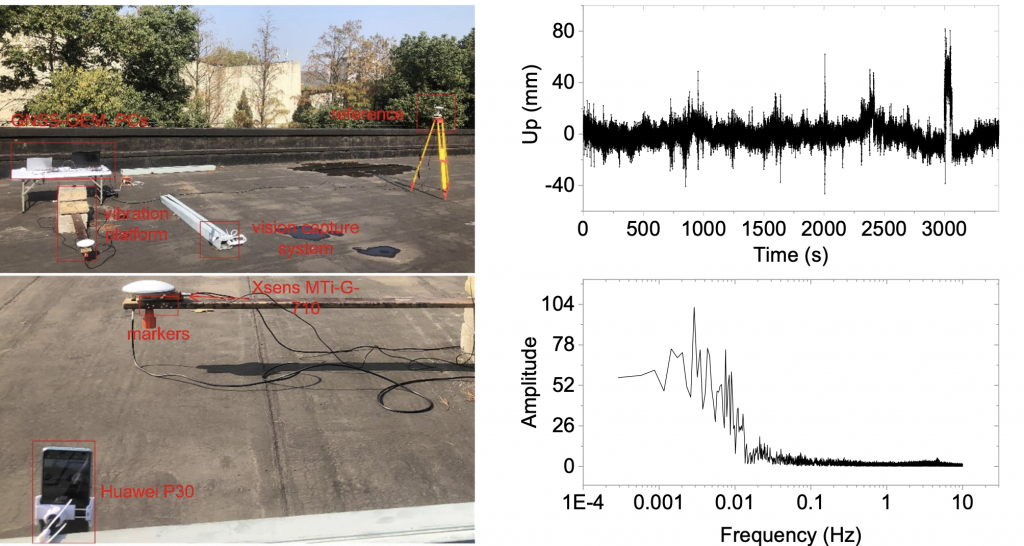Nan Shen1, Liang Chen1,2, Xiangchen Lu1, Yanlin Ruan1, Hao Hu1, Zhetao Zhang3, Lei Wang1,2, Ruizhi Chen1,2
1 State Key Laboratory of Information Engineering in Surveying, Mapping and Remote Sensing, Wuhan University, Wuhan 430079, China
2 Collaborative Innovation Center for Geospatial Technology, Wuhan 430079, Hubei, China
3 School of Earth Sciences and Engineering, Hohai University, Nanjing 211100, China
Published in GPS Solutions (2022) 26:48, https://doi.org/10.1007/s10291-021-01215-x

Abstract
High-frequency global navigation satellite system (GNSS) observations are of great significance for structural health moni- toring. At present, most studies on high-frequency GNSS observations focus on displacement extraction, while there are few studies on vibration detection. The purpose of this research is to explore a vertical vibration detection method based on high-frequency GNSS observations. The principle of GNSS kinematic positioning is presented, and a vibration detection method based on high-frequency GNSS observations is proposed. A stationary state model and a vibration state model are designed to represent the vibration state and static state of the structure. We introduce the interactive multiple-model Kalman filter to detect vibrations through model probabilities automatically. To reduce the influence of the trend term caused by unmodeled errors, we preprocess original positioning results by a moving average. To reduce the false alarm rate caused by local disturbance, a hold-on mechanism is proposed. Only when the number of the hold-on epoch is greater than the preset hold-on parameter, it is considered that vibration has occurred. Then, the detected epoch and corresponding displacement are further analyzed and processed. Simulation and field experiments were carried out to verify the proposed method. The results show the feasibility and effectiveness of the method for vertical vibration detection. Therefore, this study should be of value to practitioners wishing to implement an early warning system based on high-frequency GNSS observations.